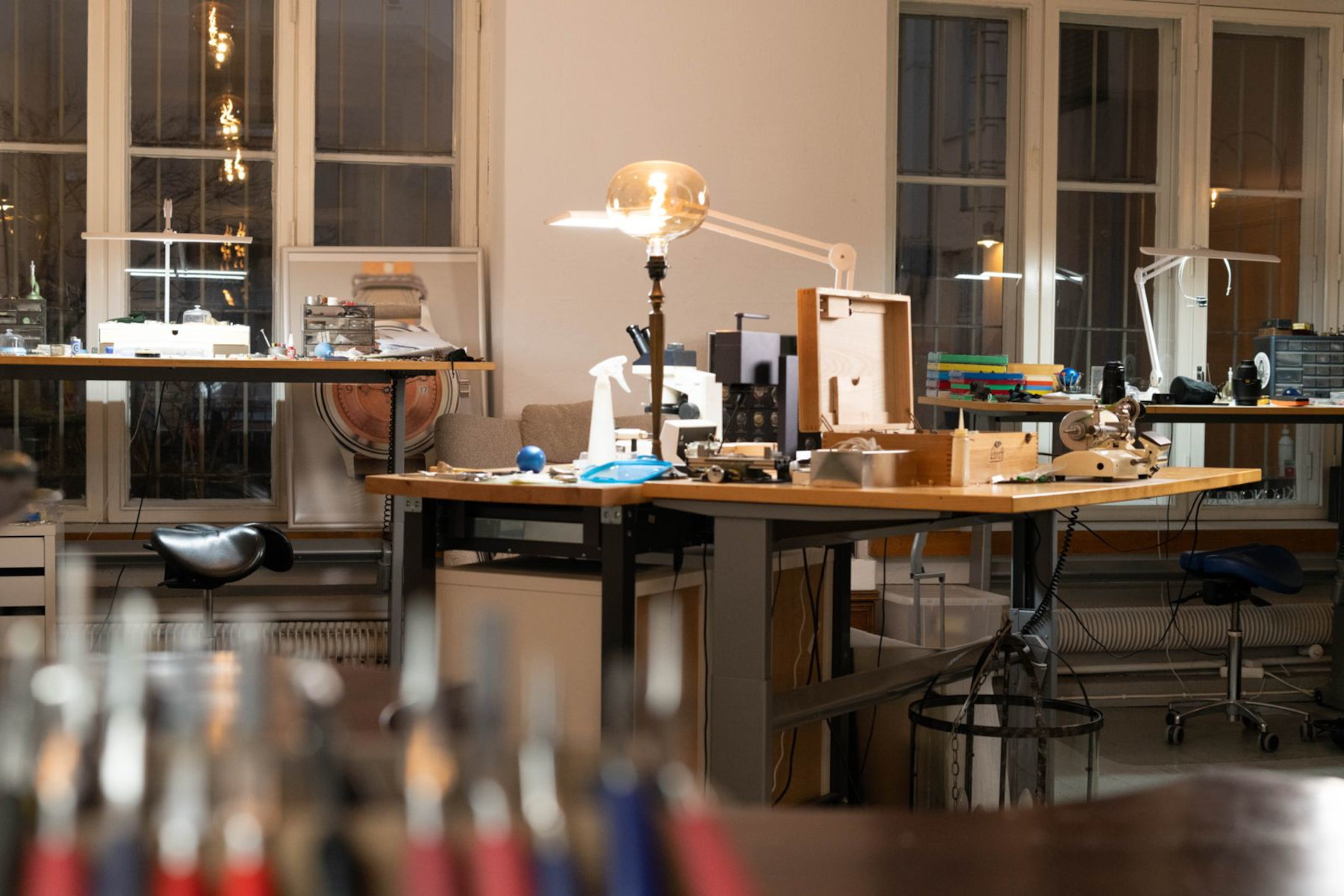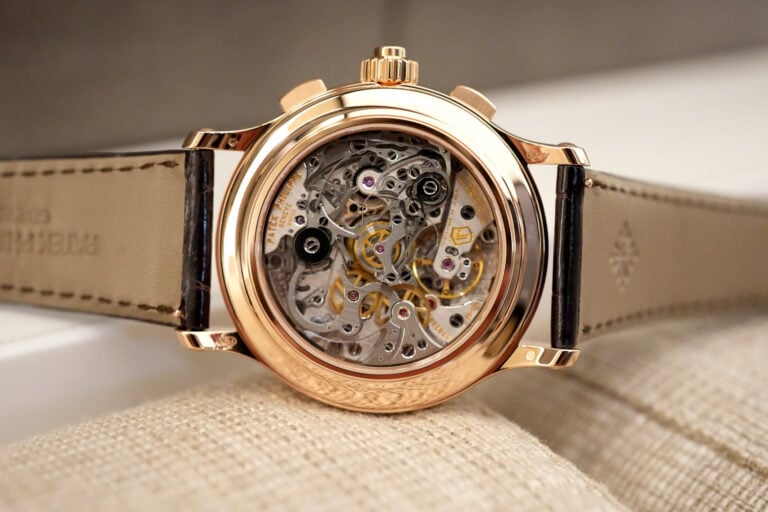We Touch-Down In Finland To Discover Indie Watchmaker Reima Koivukoski
A graduate from the Finnish watchmaking institute, with background in A. Lange & Sóhne, Habring² and others, Reima has since ventured out on his own.

While Scandinavia is not necessarily the birthplace of mechanical watchmaking, there’s quite a list of names that have emerged from the northern European countries that exhibit great craftsmanship and creativity. Think of individuals such as Stepan Sarpaneva, Kari Voutilainen, or GoS’ Patrik Sjögren, but also the young and upcoming Danish watchmaker Rune Bakkendorff. Next in line to be featured on MONOCHROME Watches is Reima Koivukoski, an independent watchmaker from Helsinki, Finland who learned his craft in the Finnish watchmaking institute, but also from esteemed individuals such as Richard Habring.
Robin, MONOCHROME Watches – Reima, what ignited your passion for watchmaking?
My introduction to watchmaking was a slow burn. I made a lot of miniatures during elementary school and painted all of them by hand, and I still do this in my limited free time. My father always had diver watches around so I had a fleeting idea watches had some importance. The earliest memories of watches I had are of a Star Wars Digitial Droid watch with a flip-top during my elementary school years, and the next watch of importance was my “army Rolex”, a dirt-cheap digital watch with no brand that merely looked like a Rolex.
After my conscript service in the Finnish military, I had to decide where to go study and my mother found an online article about the admission tests for the Finnish School of Watchmaking, the Kellaseppäkoulu, in Espoo. It seemed exciting to me, so I applied and got accepted. I had a preference for watchmaking but was chosen to the micromechanical side, which in hindsight was a great choice since it gave me a good basis for making parts. During my years in micromechanics, I was considering a career in high-tech but always returned to watches. After 3 years I had a chance to also do my watchmaking degree, and get a double degree. When I was done, I was selected to enter the F.A. Lange Watchmaking Excellence Competition, and I think that was the point of no return for my career as a watchmaker.
What made you decide to pursue a career in the industry?
After I finished my studies, I had a crystal clear vision towards watchmaking. I think in watchmaking I can see a mountain top but I can never reach it. There’s always a next step to be taken, a new skill to be learned and perfected, and a next challenge around the corner. Also, the greatest motivation to continue being a watchmaker and try to be better is the people in the industry. A lot of them are hugely motivated, which in turn pushes me forward ti improve and find new opportunities as well.
You’ve studied at the Finnish watchmaking school in Espoo, your hometown. What was that like?
The school was quite fun, actually! I was setting my own goals and thinking about what I wanted to do after school. Our school offers a lot of freedom to its students and the only problem I had was to hide in vacant classes after school to get extra hours done on my projects. One of them was an escapement model I was able to finish in my 3rd year. I think at some point, my class teacher got bored of chasing me away and just accepted that I was there after school sometimes.
I had tools at home but I have always needed a separate workspace to concentrate. Even already in school, I was very lucky to meet people within the industry, and in my practice periods also. I spent a lot of time researching aesthetics and figuring out what looks good and how to make it.
After graduating, you spend some time in Austria and Germany. Can you tell us a bit about that?
I got my first job at Habring², which is located in Völkermarkt, Austria. It’s a beautiful town with a workshop view of the mountains, a river and the market. I packed most of my clothes into a ski bag and two weeks after I graduated, I took a plane to Klagenfurth where Richard and Maria Habring picked me up. I worked for them for about a year, and I learned a lot from them. Most important the art of case making and prototyping, often in steel. It was also an experience where I learned to work hard and efficiently, as school and working life are quite different. I had a lot of conversations with Mr Habring about what I wanted to do in the future and those questions and thoughts still bear fruit to this day. I think that was the greatest thing I learned from him, and I am very thankful I had the opportunity to do so.
After Austria, I moved to Köln, Germany, which is very different. It was the largest city I had lived in my whole life at that time, and I worked for Atelier Suché. At Scuhé I had the opportunity to repair and restore whatever I wanted, from vintage AP to Rolex, but also complicated stuff like minute repeaters and tourbillons. I also worked for Chronext, also in Köln, as a team leader for watchmakers. This was my first experience in the trading side of the watchmaking business and Chronext was one of the largest platforms for online watch sales. There I continued to work with complications and learned how to polish and handle precious metal cases from a Croatian master goldsmith, Zlatko Bozic.
What triggered you to venture out on your own as an independent watchmaker, or was that always the goal?
It has been an underlying dream of mine to have my own workshop and be an independent watchmaker. While working in Germany I already had taken some commission commitments, and in 2020 I realized I had to make a decision. Do I continue my life in Germany or do I go back to Finland? At that time, my wife and I had flown between different countries and we started to think about creating the next step in our lives, and we settled on Finland. I had some service agreements so I was able to handle my day-to-day expenses with this, and do commission work on the side to start my business, alongside a small loan.
What was the very first watch you made under your own name?
My first piece with my name on it went to a Finnish collection. It had a 38mm wide silver case with teardrop lugs and a frosted silver dial. The gilded movement had a half-moon bridge and I was extremely happy with the piece. The Number 1 wasn’t a commissioned piece, it was a piece I had made on my own time after work and I found a customer for it after I had finished it. This was back when I was still living in Germany.
How would you describe your watchmaking style, and how does that reflect in your collections?
I like to think I make timeless designs with materials that last. I have designed all my pieces many times over and each design starts quite clumsy but gets developed and refined over time. I dray them over and over until I’m happy with the overall look and balance before I start sourcing materials and building parts for it.
You’re a one-man watchmaking atelier, can you talk us through the work you put into your watches?
I had quite a clear vision of how I wanted to make my own watches from the beginning. I want to do it as close to in-house as my resources allow me to do, and that goal is coming closer and closer. I make cases from a steel bar or form gold granulate into a polished case by myself. I make the hands, from a sheet of steel, and the dial from sheets of silver and so on. I also make my own buckles for the straps. I’m still using base movements at the moment, but I completely restore, modify and finish them in my workshop.
You also build bespoke watches for clients. Can you elaborate on that?
Yes, this is a large part of my work as an independent watchmaker. I get requests for watches that my clients would love to have and then we start working on it. I communicate mostly via email with my clients and I use 3D programs to envision the project and bring my client’s ideas to life. The projects can be big or small, simple or complex, and I do alterations to my current designs as well. If someone wants a different dial, for instance, that’s entirely possible! This gives me room to grow and understand my client’s demands. It also pushed me as a watchmaker to take on new and more demanding projects.
Can you share some details of what you’re currently working on?
Currently, I am working on a lot of enamel projects, as well as chronographs. Enamelling has been a recent addition to my catalogue and I always get very excited by the clean and shiny surfaces it can produce. It’s very challenging to master though, and I’m concentrating on opaque enamels only for now. It’s been quite a journey to even find the right tools and methods to get each dial just right!
How can people learn more about your watches and get a feel for them, or perhaps commission one?
The best way to contact me is my email ([email protected]) and my work can be found on Instagram as well. Of course, I also have my own website where people can see my work and get in touch.
For more information, please visit RKoivukoski.com.
















2 responses
Ik heb een horloge in bestelling sinds augustus 2022 bij hem maar de communicatie en afspraken verlopen niet zoals gewenst, een beloofde datum van levering is al 3x uitgesteld zonder communicatie van zijn kant … ik moet er steeds zelf achter en dat is niet professioneel mijn inziens, jammer want ik geloof wel ik zijn kwaliteiten.
Same here. I ordered a watch May 2023. No sight of it 18 months later, and it’s now Nov 2024, and I’ve paid in full. Things went well for the 1st 4-5 months, with images of proposed dial, case, and dial discussions were done. Then in Nov/Dec 2023, news started drying up, emails went without reply. Reima made claims that renders were emailed to me, but I never received them. In May 2024, there was even a message saying the watch was almost ready but being prepared for photo-taking, but when asked for pictures of the watch, he went silent again. Many excuses were given, and a UPS tracking number was even given in Aug 2024, but of course no watch ever shipped, and the unused UPS tracking number expired in Sep 2024. I do not know if I will ever get my money back or even get the watch I asked for, but I am not optimistic. Proceed with caution, my fellow watch collectors.